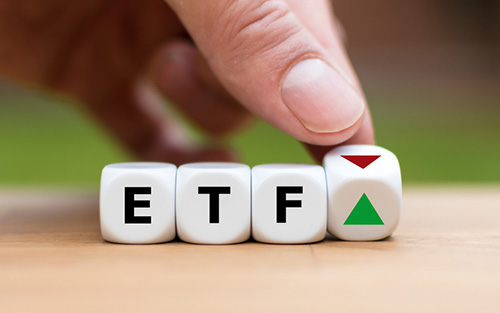European bond ETFs enjoyed positive flows in May as markets bounced back, but equities suffered redemptions, according to the latest figures from Refinitiv. Although the Covid-19 crisis has hit indices hard, opportunities in these index-based investments still exist but, as always, there are risks, according to industry experts.
SARJ PANESAR, GLOBAL HEAD OF BUSINESS DEVELOPMENT, ASSET MANAGERS, SOCIETE GENERALE SECURITIES SERVICES
What are the main risks for ETFs in the current climate?
The main risks to investors are widening spreads in increased volatility and liquidity in the ETF space. The impact of these will vary depending on underlying asset classes and available liquidity. So far, the ETF market has been up to the challenge, but liquidity is finite and the costs of this may vary with market conditions. We have seen discounts of up to 5% over net asset value in some bond funds but these have quickly narrowed.
Could the slashing of dividends have an effect on certain ETFs?
The simple answer is yes. With a number of ETFs aiming to provide income, the loss of these dividends will have a direct impact on the income paid. In saying that, this is no different than any other fund wrapper in such circumstances. The market dynamic has changed during the pandemic. We do not know if this will be permanent or temporary, and how it may develop over time. One thing for sure, in the short term, dividend income will be limited.
MOHAMMED KAZMI, PORTFOLIO MANAGER AND MACRO STRATEGIST, FIXED INCOME, UNION BANCAIRE PRIVÉE
Do credit default swap (CDS) indices outperform traditional bond investing and ETFs during market downturns, and what are the risks involved?
During risk-off episodes, we have historically seen CDS indices outperforming the traditional cash bond benchmarks. This outperformance is driven by the stronger liquidity within the CDS market, which sees volumes actually increase in times of stress. For example, daily average traded volumes on both European and US high yield CDS indices are $5 billion in normal times and can increase up to 4x this amount during market stress. This is possible due to indices having both a long and short investor base, allowing for two-way volumes even during the sell-off.
This compares to traditional bond investing, where redemptions and outflows from the asset class which have been observed over the past couple of months, has meant that investors became forced sellers in a one-way market, which drives the underperformance compared to CDS indices. This illiquidity effect in the cash bond market can also be seen within the ETF space, where waves of selling leads to ETFs trading at a discount to the NAV.
Furthermore, ETFs can at times suffer from their composition which can diverge from the benchmark, given that they are attempting to replicate a bond market that is made up of many bonds, with different maturities and names that may not trade that regularly in the HY [high yield] market.
OLGA DE TAPIA, GLOBAL HEAD OF ETF SALES, HSBC GLOBAL ASSET MANAGEMENT
Are ESG-focused ETFs still a viable option for investors?
The market downturn has undoubtedly had a disruptive effect on ETFs, as a negative cocktail of heightened volatility and widening spreads in the underlying markets has translated to ETF trading. However, trading has not been impossible. There has been a lot of focus on liquidity during this period of uncertainty. We have continued to execute both creation and redemption flow for our clients in the primary market, while the secondary market has functioned in a robust manner.
Despite this market turmoil, flows into sustainable and ESG-related products have remained resilient, weathering the storm better than more conventional ETFs. This demonstrates that investors’ desire to initiate change through sustainable investing shows no signs of slowing down.
The other factor driving ESG resilience is that during the downturn, clients are looking for companies with proven track records and healthy amounts of debt. As the underlying companies that these indexes overweight tend to be well run and high quality, we are seeing increased demand from investors looking to take comfort in passive ESG solutions.
FANNIE WURTZ, HEAD OF ETFS, INDEXING AND SMART BETA BUSINESS LINE, AMUNDI
Where are investors seeking safe havens to weather the storm?
In an environment marked by a general market downturn that has impacted most risky asset classes, during the month of March, European ETFs registered their worst-ever month in terms of outflows.
However, it is worth noticing that some specific segments including socially responsible investing (SRI) remained in positive territory, confirming what has been a long-term trend for investors. SRI Ucits ETFs recorded positive flows over the first quarter and collected €5.3 billion of net new assets.
Gold played its safe-haven role, as it remains an efficient hedge at times of volatility. The ETC gold market also registered positive flows since the beginning of the year, with close to €7 billion of net new assets.
Moving forward, ETFs are efficient tools to implement diversified allocation strategies. They allow investors to adapt quickly to different market regimes and get prepared to reconsider exposure to specific asset classes.
© 2020 funds europe





